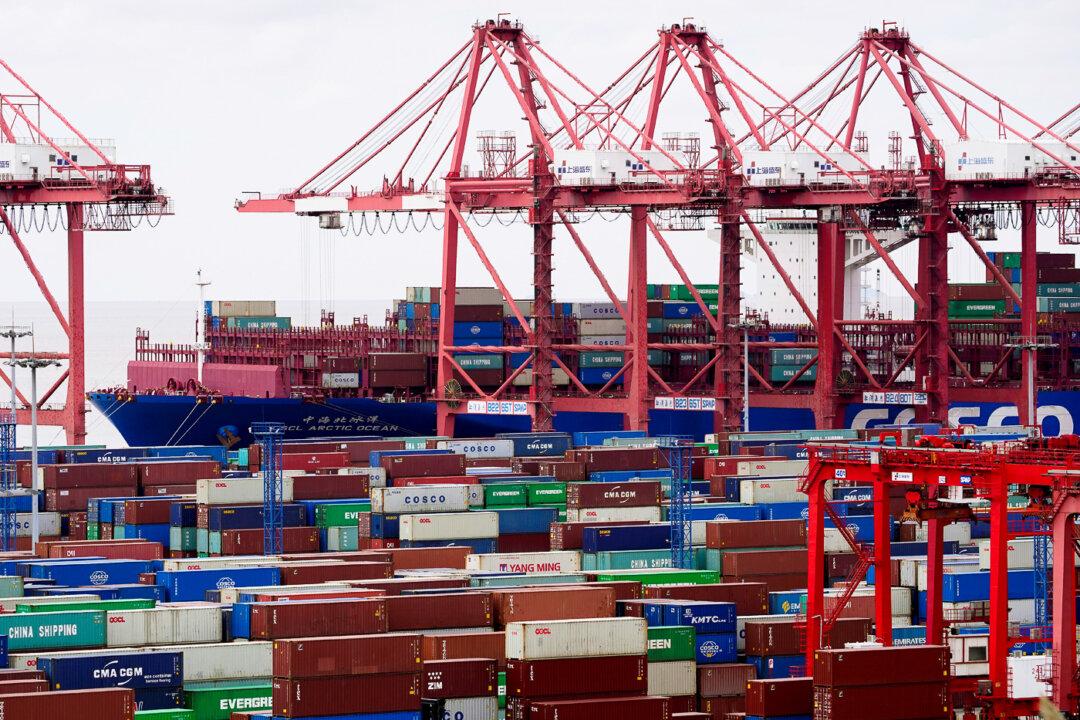President Joe Biden has tried hard to sound positive on the U.S. economy. He has told the American people that it’s doing better than most other economies. He is correct, but it means little to most Americans. After all, they live here, not in some other economy. And though they are aware U.S. economic conditions are better than elsewhere, they are still suffering from inflation and can see definite signs of economic weakness.
Despite modest growth in the third-quarter gross domestic product (GDP), the consensus—of economists and the average man or woman on the street—is that this economy, if it’s not already, will soon be in a recession. The strain is evidently clear in household finances.
It’s especially worrisome that people have begun to outspend the growth of their incomes. Normally, high levels of consumption signal economic strength, but not when, as now, they threaten household financial strength.
It’s easy to understand why people are spending faster than they otherwise might. Inflation at near 40-year highs provides everyone with a huge inducement to buy before the prices rise again. The pressure is evident even with groceries. With these prices rising at more than 11 percent a year, householders are only rational to stock up on nonperishables and to cram their freezers as full as they can.
The incentive is even stronger when it comes to big-ticket items such as cars, appliances, and what the government statisticians refer to as “durable goods.” With new car prices rising at about 9.5 percent a year, stretching to buy a year earlier than you might is almost like getting a 10 percent discount on the price you are likely to pay if you wait.
But if such a rush to spend is rational, it’s also destructive. According to the Commerce Department’s Bureau of Economic Analysis, consumer outlays have risen at almost an 8 percent annual rate since January, but personal incomes have risen at only a 5.5 percent rate. Such a difference cannot persist for long.
Already, signs of financial distress are evident. According to the Federal Reserve, household levels of revolving credit—mostly credit cards—have accelerated tremendously. This debt load grew at an 18.1 percent annual rate in August, the most recent month for which data are available, far above the 8 percent rates of advance recorded this time last year.
Measuring the same phenomenon from a different direction, the Commerce Department reports a major slowdown in household rates of saving. Flows of monies into savings have dropped 25 percent from what they were at the beginning of this year. As a percent of after-tax income, savings flows dropped from 4.7 percent this past January to a mere 3.5 percent in August, the most recent month for which data are available.
True, money is still flowing into savings, and the rich always have a surplus with which to add to wealth. But the marked slowdown implies that many in the middle class and certainly among lower-income Americans have already given up saving.
Since households already sustain spending rates in excess of income growth, future consumption cutbacks are all but ensured. The growing debt load as well as savings shortfalls will further constrain the ability to spend. The inevitable consumer cutbacks will lead to layoffs, and the attendant loss of those incomes will further constrain spending. Since consumer spending constitutes some 70 percent of the U.S. economy, those cutbacks will all but ensure a major recessionary push in coming months and quarters.
These matters raise a second and more fundamental concern. Heavy household debt levels will compete with business for the credit it needs to invest in new facilities and to expand the economy’s productive ability generally. The slowdown in flows of household savings will compound the problem. Especially because the Federal Reserve’s anti-inflation campaign is constraining the rate of new money creation, the financial system will depend more than usual on household savings to get business the credit it needs for expansion. It looks like the funds will not be there.
According to a widely accepted rule of thumb, the two quarters of real declines in the nation’s GDP during this year’s first half signal that the economy is already in recession, though the modest third-quarter growth muddles the picture somewhat. If some refuse to acknowledge these clear signs of weakness, the deteriorating state of household finances suggests—and strongly so—that the economy will soon be in recession.
And if the bad news of the first half does in fact signal that a recession has already begun, then the picture described here suggests—equally strongly—that the recession will extend into 2023. With inflation still raging, this coming year might well deserve the descriptor “stagflation.”





